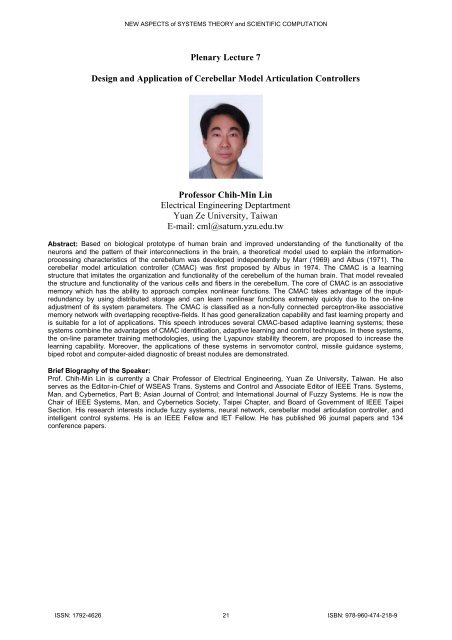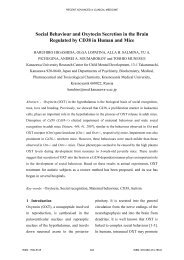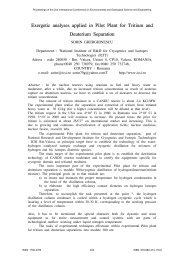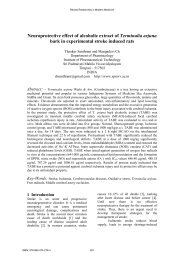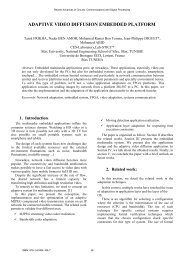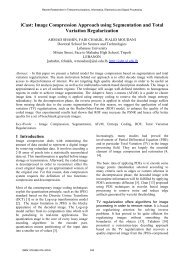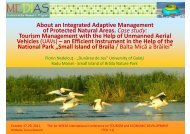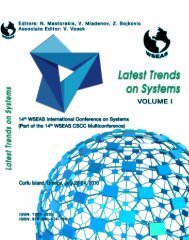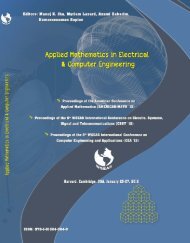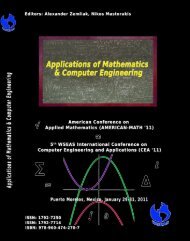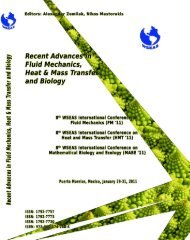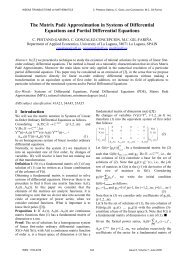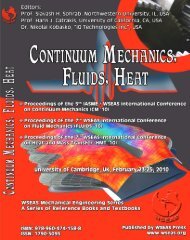NEW ASPECTS of SYSTEMS THEORY and SCIENTIFIC ... - WSEAS
NEW ASPECTS of SYSTEMS THEORY and SCIENTIFIC ... - WSEAS
NEW ASPECTS of SYSTEMS THEORY and SCIENTIFIC ... - WSEAS
You also want an ePaper? Increase the reach of your titles
YUMPU automatically turns print PDFs into web optimized ePapers that Google loves.
<strong>NEW</strong> <strong>ASPECTS</strong> <strong>of</strong> <strong>SYSTEMS</strong> <strong>THEORY</strong> <strong>and</strong> <strong>SCIENTIFIC</strong> COMPUTATION<br />
Plenary Lecture 7<br />
Design <strong>and</strong> Application <strong>of</strong> Cerebellar Model Articulation Controllers<br />
Pr<strong>of</strong>essor Chih-Min Lin<br />
Electrical Engineering Deptartment<br />
Yuan Ze University, Taiwan<br />
E-mail: cml@saturn.yzu.edu.tw<br />
Abstract: Based on biological prototype <strong>of</strong> human brain <strong>and</strong> improved underst<strong>and</strong>ing <strong>of</strong> the functionality <strong>of</strong> the<br />
neurons <strong>and</strong> the pattern <strong>of</strong> their interconnections in the brain, a theoretical model used to explain the informationprocessing<br />
characteristics <strong>of</strong> the cerebellum was developed independently by Marr (1969) <strong>and</strong> Albus (1971). The<br />
cerebellar model articulation controller (CMAC) was first proposed by Albus in 1974. The CMAC is a learning<br />
structure that imitates the organization <strong>and</strong> functionality <strong>of</strong> the cerebellum <strong>of</strong> the human brain. That model revealed<br />
the structure <strong>and</strong> functionality <strong>of</strong> the various cells <strong>and</strong> fibers in the cerebellum. The core <strong>of</strong> CMAC is an associative<br />
memory which has the ability to approach complex nonlinear functions. The CMAC takes advantage <strong>of</strong> the inputredundancy<br />
by using distributed storage <strong>and</strong> can learn nonlinear functions extremely quickly due to the on-line<br />
adjustment <strong>of</strong> its system parameters. The CMAC is classified as a non-fully connected perceptron-like associative<br />
memory network with overlapping receptive-fields. It has good generalization capability <strong>and</strong> fast learning property <strong>and</strong><br />
is suitable for a lot <strong>of</strong> applications. This speech introduces several CMAC-based adaptive learning systems; these<br />
systems combine the advantages <strong>of</strong> CMAC identification, adaptive learning <strong>and</strong> control techniques. In these systems,<br />
the on-line parameter training methodologies, using the Lyapunov stability theorem, are proposed to increase the<br />
learning capability. Moreover, the applications <strong>of</strong> these systems in servomotor control, missile guidance systems,<br />
biped robot <strong>and</strong> computer-aided diagnostic <strong>of</strong> breast nodules are demonstrated.<br />
Brief Biography <strong>of</strong> the Speaker:<br />
Pr<strong>of</strong>. Chih-Min Lin is currently a Chair Pr<strong>of</strong>essor <strong>of</strong> Electrical Engineering, Yuan Ze University, Taiwan. He also<br />
serves as the Editor-in-Chief <strong>of</strong> <strong>WSEAS</strong> Trans. Systems <strong>and</strong> Control <strong>and</strong> Associate Editor <strong>of</strong> IEEE Trans. Systems,<br />
Man, <strong>and</strong> Cybernetics, Part B; Asian Journal <strong>of</strong> Control; <strong>and</strong> International Journal <strong>of</strong> Fuzzy Systems. He is now the<br />
Chair <strong>of</strong> IEEE Systems, Man, <strong>and</strong> Cybernetics Society, Taipei Chapter, <strong>and</strong> Board <strong>of</strong> Government <strong>of</strong> IEEE Taipei<br />
Section. His research interests include fuzzy systems, neural network, cerebellar model articulation controller, <strong>and</strong><br />
intelligent control systems. He is an IEEE Fellow <strong>and</strong> IET Fellow. He has published 96 journal papers <strong>and</strong> 134<br />
conference papers.<br />
ISSN: 1792-4626 21 ISBN: 978-960-474-218-9


